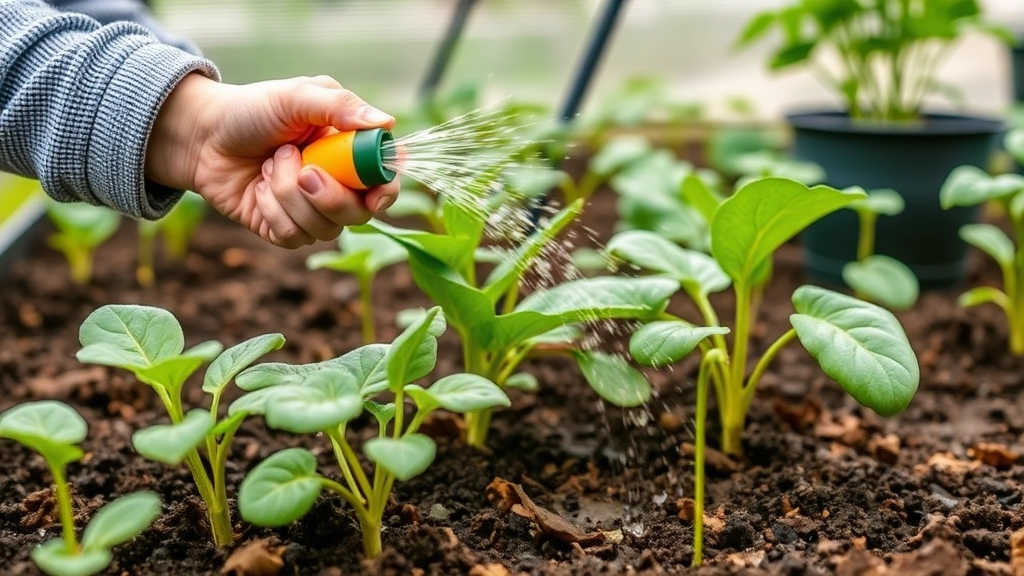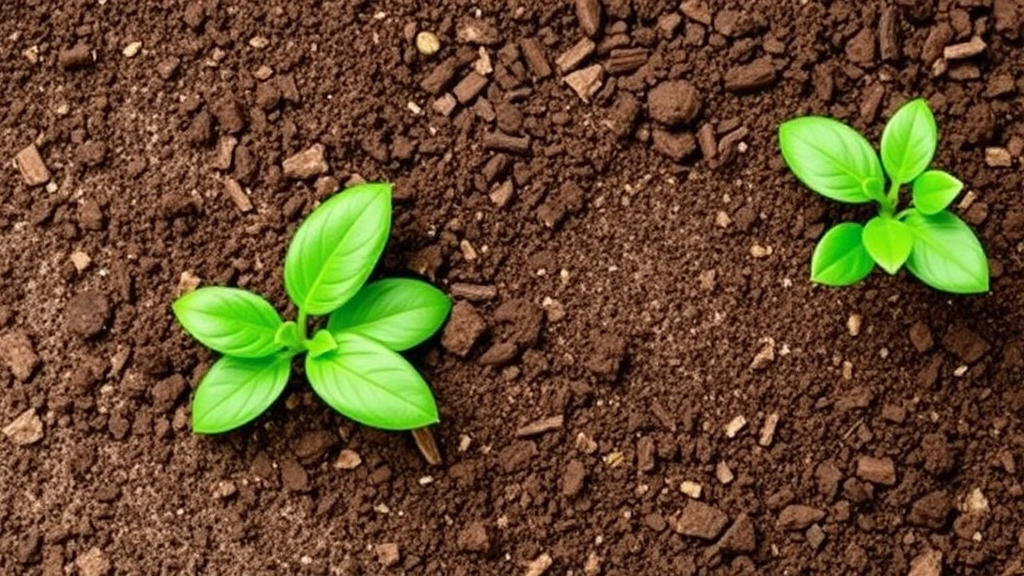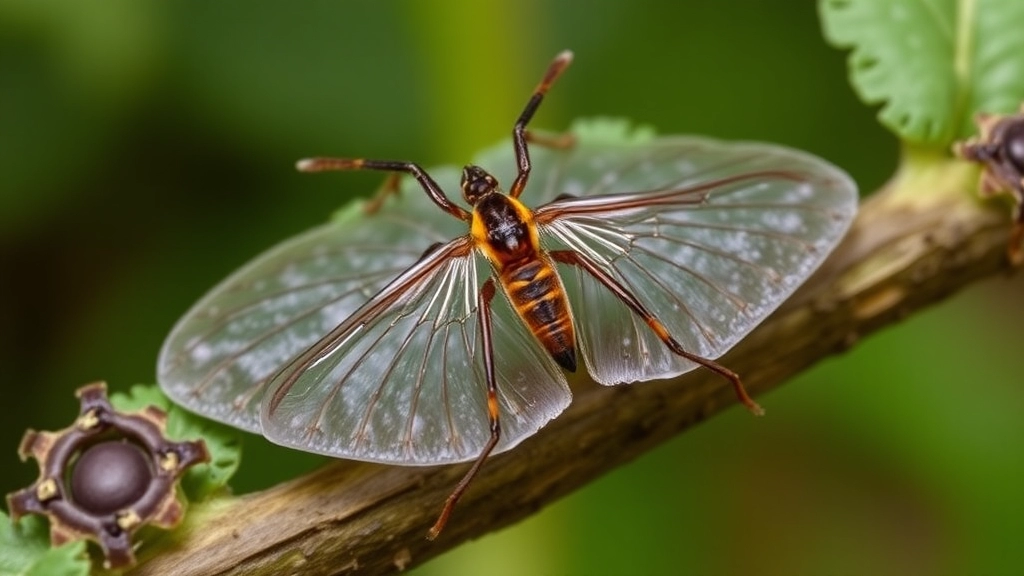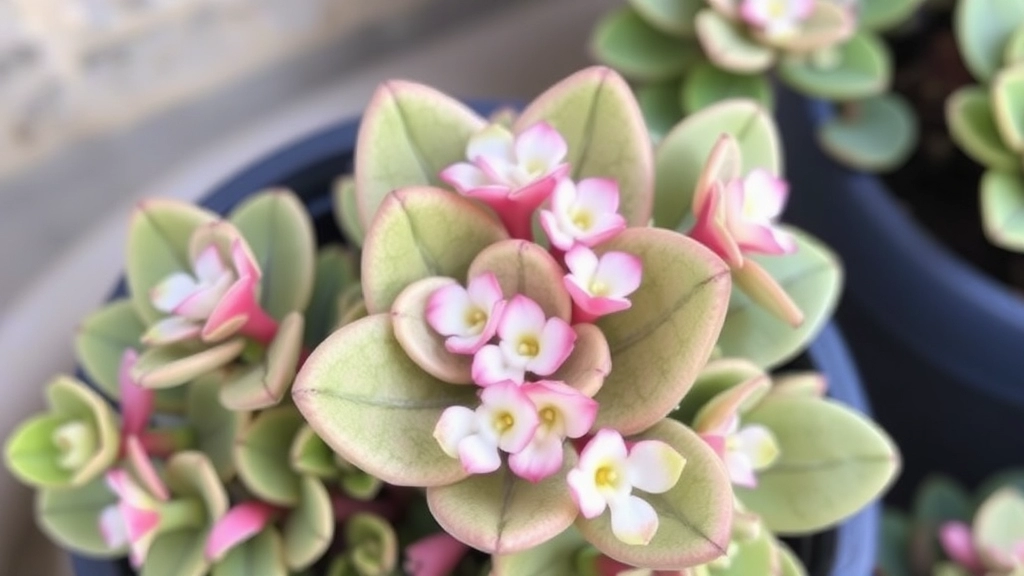Thinking about adding a Kalanchoe Pinnata to your plant collection?
You’re in the right place. This versatile succulent is not only easy to care for but also offers a range of medicinal benefits. In this guide, I’ll walk you through everything you need to know about growing, maintaining, and propagating Kalanchoe Pinnata.
What You’ll Learn
From ideal growing conditions to the best watering techniques, we’ve got you covered. Learn how to provide the right light, soil, and fertilizer to ensure your plant thrives. Plus, discover simple propagation methods and tips to keep pests and diseases at bay.
Ready to dive in?
Let’s get started!
Are you struggling to provide the perfect environment for your Kalanchoe Pinnata? You’re not alone. Many plant enthusiasts find it challenging to create the ideal growing conditions for this resilient succulent.
## Climate and Temperature
Kalanchoe Pinnata thrives in warm climates.
– **Temperature Range**: Ideally, it prefers temperatures between 20°C to 30°C (68°F to 86°F).
– **Frost Sensitivity**: This plant is not frost-tolerant, so if you live in a cooler area, consider bringing it indoors during winter.
## Humidity Levels
While Kalanchoe Pinnata is adaptable, it does best in moderate humidity.
– **Optimal Humidity**: Aim for around 40% to 60% humidity.
– **Dry Environments**: If you live in a dry area, misting the leaves occasionally can help.
## Potting and Placement
Choosing the right pot and location is crucial for its growth.
– **Pot Type**: Use pots with drainage holes to prevent water accumulation.
– **Placement**: A south or west-facing window is ideal for maximum sunlight exposure.
For more detailed care tips, check out our [complete guide to Kalanchoe Pinnata air plant care](https://planthq.org/complete-guide-to-kalanchoe-pinnata-air-plant-care/). Additionally, if you’re interested in the health benefits of this plant, you can learn about the [health benefits of Kalanchoe Pinnata extract](https://planthq.org/health-benefits-of-kalanchoe-pinnata-extract/).
Proper Watering Techniques to Avoid Root Rot

Are you worried about your Kalanchoe Pinnata wilting away or, worse, developing root rot?
You’re not alone! Many plant lovers face this issue, and it can be a real downer.
Let’s dive into how we can keep our Kalanchoe thriving with the right watering techniques.
Key Tips for Watering
- Check the Soil: Always feel the top inch of the soil. If it’s dry, it’s time to water. If it’s still moist, hold off.
- Watering Schedule: Generally, a bi-weekly watering routine works well, but adjust based on your environment. Hotter, drier conditions may require more frequent watering.
- Watering Method: Water thoroughly until it drains out of the bottom. This ensures the roots get enough moisture.
- Avoid Standing Water: Make sure your pot has drainage holes. Standing water is a recipe for root rot.
Signs of Overwatering
Keep an eye out for these signs:
- Yellowing leaves
- Wilting despite wet soil
- A musty smell from the pot
If you notice any of these, it might be time to rethink your watering habits.
Bonus Tip
Consider using a moisture meter. It’s a handy tool that takes the guesswork out of watering.
Light Requirements and Sun Exposure Guidelines
When nurturing Kalanchoe Pinnata, many plant enthusiasts often wonder about the ideal light conditions.
Why is Light Important?
Light is crucial for photosynthesis, which is essential for the plant’s growth and health. Without the right amount of light, Kalanchoe Pinnata can become leggy, lose its vibrant colour, and may even fail to thrive.
Optimal Light Conditions:
- Bright Indirect Light: Kalanchoe Pinnata prefers bright, indirect sunlight.
- Avoid Direct Sunlight: While it can tolerate some direct sunlight, prolonged exposure can scorch the leaves.
- Indoor Placement: If grown indoors, place it near a south or west-facing window for the best results.
Signs of Insufficient Light:
- Stretched stems
- Pale or yellowing leaves
- Slow growth
Adjusting Light Exposure:
- If you notice these signs, consider moving your plant to a brighter location.
- Conversely, if the leaves are turning brown or crispy, it may be getting too much direct sunlight.
Seasonal Considerations:
During winter months, you might need to adjust the placement to ensure adequate light exposure, as days are shorter.
For more detailed care tips, check out our Complete Guide to Kalanchoe Pinnata Air Plant Care and learn about the benefits and uses of Kalanchoe Pinnata in Tamil Nadu.
Best Soil and Fertilizer for Optimal Growth

When nurturing your Kalanchoe Pinnata, selecting the right soil and fertilizer is crucial for its health and vitality. You might be wondering, “What type of soil should I use?” or “How often should I fertilize?” Let’s dive into the essentials.
Soil Requirements
Kalanchoe Pinnata thrives in well-draining soil. Here are some key points to consider:
- Cactus or Succulent Mix: A pre-made cactus or succulent mix is ideal, as it provides excellent drainage.
- Additives: Consider mixing in perlite or coarse sand to enhance drainage further.
- pH Level: Aim for a slightly acidic to neutral pH (around 6.0 to 7.0).
Fertilizer Guidelines
Fertilising your Kalanchoe Pinnata can significantly boost its growth. Here’s how to do it:
- Type of Fertilizer: Use a balanced, water-soluble fertilizer, preferably one with a higher phosphorus content (like a 10-20-10 NPK ratio).
- Frequency: Fertilize every 4-6 weeks during the growing season (spring and summer).
- Dilution: Always dilute the fertilizer to half the recommended strength to prevent root burn.
Tips for Success
- Observe Your Plant: If your Kalanchoe Pinnata shows signs of slow growth or pale leaves, it may need more nutrients.
- Seasonal Adjustments: Reduce or stop fertilizing during the dormant winter months.
Simple Propagation Methods: Stem and Leaf Cuttings
Have you ever wondered how to expand your Kalanchoe Pinnata collection without spending a fortune?
Propagation through stem and leaf cuttings is not only simple but also incredibly rewarding.
Common Pests and Diseases to Watch Out For

So, you’ve set your Kalanchoe Pinnata up for success, but what happens when those pesky pests or sneaky diseases decide to crash the party?
Let’s dive into the common culprits that could threaten your beloved plant.
1. Pests to Look Out For
- Aphids: These tiny green or black bugs love to suck the sap from your Kalanchoe. If you spot sticky residue or curled leaves, they might be the reason.
- Mealybugs: They look like little cotton balls and tend to hide in the leaf axils. They can cause yellowing leaves and stunted growth.
- Spider Mites: If you notice fine webbing on your plant, these little guys might be the culprits. They thrive in dry conditions and can be tricky to spot.
- Scale Insects: These pests appear as small, brown bumps on stems and leaves. They suck the sap and can weaken your plant over time.
2. Diseases to Watch For
- Root Rot: This sneaky disease often comes from overwatering. If your plant starts wilting despite adequate moisture, check those roots! They should be firm, not mushy.
- Powdery Mildew: This white, powdery substance on leaves indicates high humidity and poor air circulation. It can be a real nuisance if not tackled quickly.
- Leaf Spot: If you see brown or black spots on your leaves, it could be a fungal infection. Make sure to remove affected leaves and improve air circulation.
3. Quick Tips for Prevention
- Inspect Regularly: Make it a habit to check your Kalanchoe for any signs of pests or diseases. Early detection is key!
- Good Airflow: Ensure your plant has enough space around it. Good airflow can help prevent fungal issues.
- Proper Watering: Avoid overwatering to keep root rot at bay. Always check the soil moisture first.
- Neem Oil: A natural pesticide, neem oil can help control pests without harming your plant.
VII. The Medicinal Benefits of Kalanchoe Pinnata
As we explore the fascinating world of Kalanchoe pinnata, it’s essential to highlight its remarkable medicinal properties. Many plant enthusiasts and herbalists have long valued this succulent for its therapeutic benefits.
Healing Properties
Kalanchoe pinnata, often referred to as “Life Plant,” is renowned for its ability to aid in various health issues. Here are some notable benefits:
- Wound Healing: The sap of Kalanchoe pinnata is known for its antiseptic properties, making it effective for treating minor cuts and bruises.
- Anti-inflammatory: This plant contains compounds that can help reduce inflammation, providing relief for conditions like arthritis.
- Respiratory Health: Traditionally, Kalanchoe pinnata has been used to alleviate symptoms of respiratory ailments, such as coughs and colds.
- Digestive Aid: Some people use the leaves to soothe digestive issues, including ulcers and gastritis.
- Antioxidant Properties: The plant is rich in antioxidants, which can help combat oxidative stress and promote overall health.
Usage Tips
To harness these benefits, consider the following methods:
- Topical Application: Apply the sap directly to wounds or inflamed areas.
- Infusions: Brew the leaves in hot water to create a herbal tea that may aid digestion and boost immunity.
- Compresses: Use crushed leaves as a poultice for localized pain or inflammation.
Caution
While Kalanchoe pinnata offers many benefits, it’s essential to use it responsibly. Always consult a healthcare professional before starting any new herbal treatment, especially if you have pre-existing conditions or are pregnant.
FAQs About Planting and Caring for Kalanchoe Pinnata
How often should I water my Kalanchoe Pinnata?
Generally, a bi-weekly watering routine works well, but you should adjust based on your environment. Always check the top inch of the soil; if it’s dry, it’s time to water. Avoid overwatering to prevent root rot.
What type of soil is best for Kalanchoe Pinnata?
Kalanchoe Pinnata thrives in well-draining soil. A pre-made cactus or succulent mix is ideal. You can also mix in perlite or coarse sand to enhance drainage further. Aim for a slightly acidic to neutral pH (around 6.0 to 7.0).
How can I tell if I’m overwatering my Kalanchoe Pinnata?
Signs of overwatering include yellowing leaves, wilting despite wet soil, and a musty smell from the pot. If you notice any of these signs, reconsider your watering habits.
What kind of fertilizer should I use for Kalanchoe Pinnata?
Use a balanced, water-soluble fertilizer, preferably one with a higher phosphorus content (like a 10-20-10 NPK ratio). Fertilize every 4-6 weeks during the growing season (spring and summer) and always dilute the fertilizer to half the recommended strength to prevent root burn.
What are common pests that affect Kalanchoe Pinnata?
Common pests include aphids, mealybugs, spider mites, and scale insects. Regular inspection and good airflow can help prevent infestations. Neem oil is also a natural pesticide that can control pests without harming your plant.
What diseases should I watch out for in Kalanchoe Pinnata?
Common diseases include root rot, powdery mildew, and leaf spot. Root rot often results from overwatering, while powdery mildew and leaf spot are usually due to high humidity and poor air circulation. Ensure proper watering and good airflow to keep these diseases at bay.
Can I use a moisture meter for my Kalanchoe Pinnata?
Yes, a moisture meter can be a handy tool that takes the guesswork out of watering, helping you avoid both under and overwatering.
How can I prevent root rot in Kalanchoe Pinnata?
To prevent root rot, ensure your pot has drainage holes and avoid standing water. Always check the soil moisture before watering and use well-draining soil.
How often should I fertilize my Kalanchoe Pinnata during the winter?
During the dormant winter months, reduce or stop fertilizing your Kalanchoe Pinnata to prevent over-fertilization and allow the plant to rest.
What should I do if my Kalanchoe Pinnata shows signs of pests or diseases?
If you notice signs of pests or diseases, act quickly. Remove affected leaves, improve air circulation, and consider using neem oil for pest control. Regular inspections can help catch issues early.
References
-
Kalanchoe Plant Care – Gardening Know How
-
How to Grow Kalanchoe Indoors – The Spruce
-
Kalanchoe Care Guide – Gardener’s Supply Company
